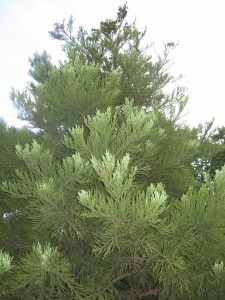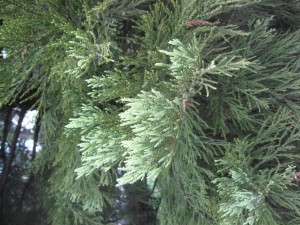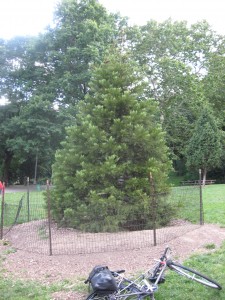The city is wavy asphalt and chalked potsy grids. The city is décolleté women wearing spandex camisoles to take out the trash. The city is a myriad of high-water marks for cultural transference: my Tuesday contribution to this gumbo being my explanation to my building’s super this morning in exact terms my cats’ native impulse to get fed at four-fifteen a.m., and how I schedule my sleeping hours and air-conditioner use around it, in passable Spanish. Los gatos se despertaron a las quatro y quarta para comer su desayuno, la comida más importante del día, y yo me desperté con ellos.
Such urban throb and bustle and hustle is watched over by thousands, millions of trees. The city is planting them, nearly everywhere. The summer of 2009, rainy weather and all, is marked for me by the arrival of 10 new saplings on my block. It beats last summer back in the dusty and sere Secret City. My Summer of the Trees. Mi verano de los arboles.
The other day at one of the tree stewardship workshops they’ve been having around town, this one in front of the Schomburg Center on Lenox Ave, during the natural pause between aerating the soil of the tree pit and pouring buckets of sprinkler water into it, one of the arborists on hand told me about the sequoia they’d just planted. I had mentioned, I recall, the fantastic weeping willow in Morningside Park, one of my favorite New York trees, which, if approached from uptown on an overcast day, looks like something out of a Constable landscape. La vista del norte en un día lluviosa parece como un paisajista de Constable.
So yesterday afternoon I visited this new woody sentinel. It’s in Morningside Park near West 122nd Street, on the Morningside Avenue side. The Parks Enforcement patrolman in his forest-green uniform whom I caught up to by the comfort station at 115th Street gave me directions, after he admonished an interracial pair of middle-aged dopers. The tree looks like a reimagined cedar tree, whose leaves the sequoia’s faintly resemble, but far taller and already more complex and robust than the ordinary stringy cedar tree I’m familiar with. There’s no superfluous sign or label; what sign could last the thousand years that the tree might grow? ¿En que manera puede una etiqueta dura más de mil años?



